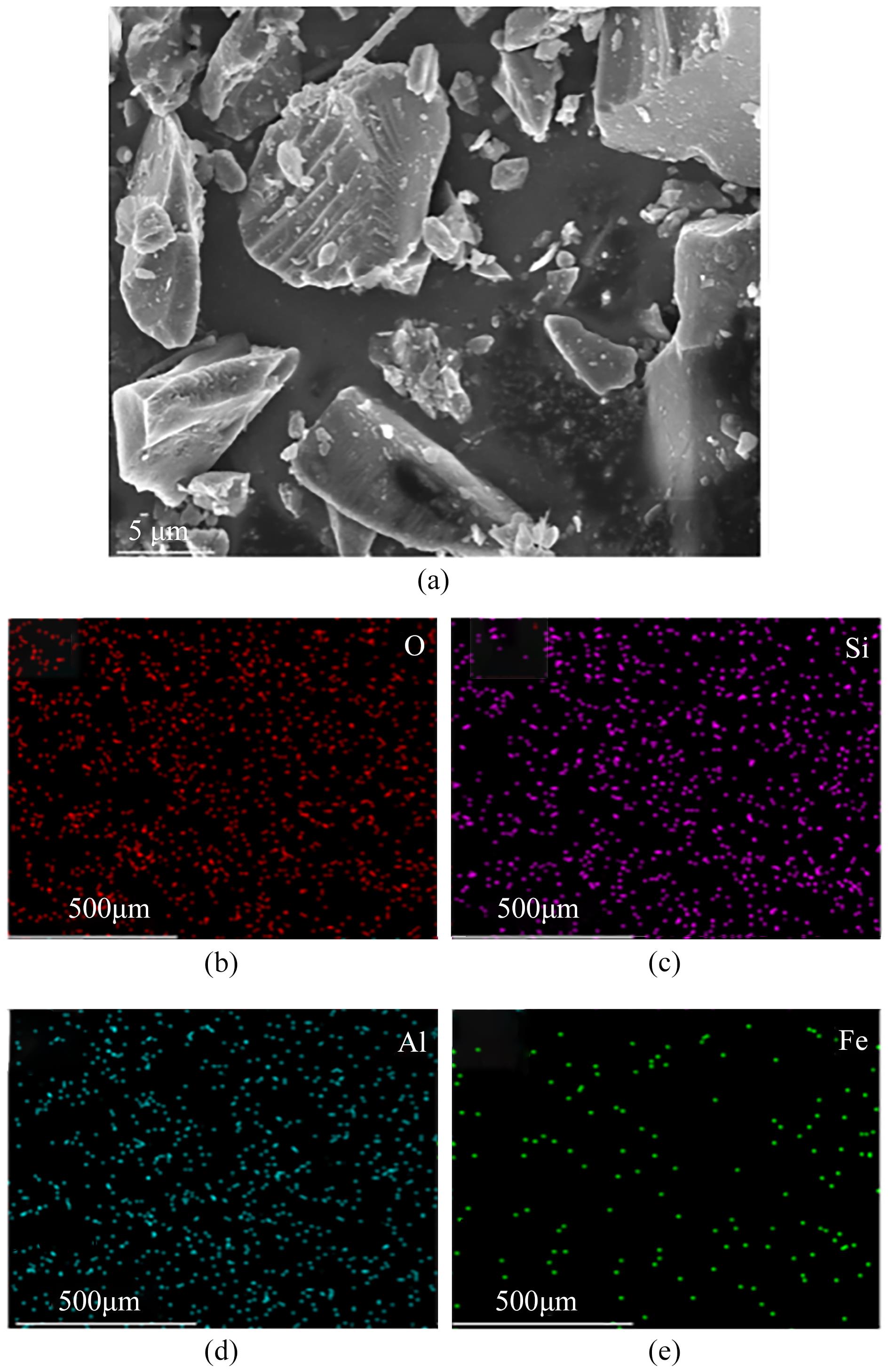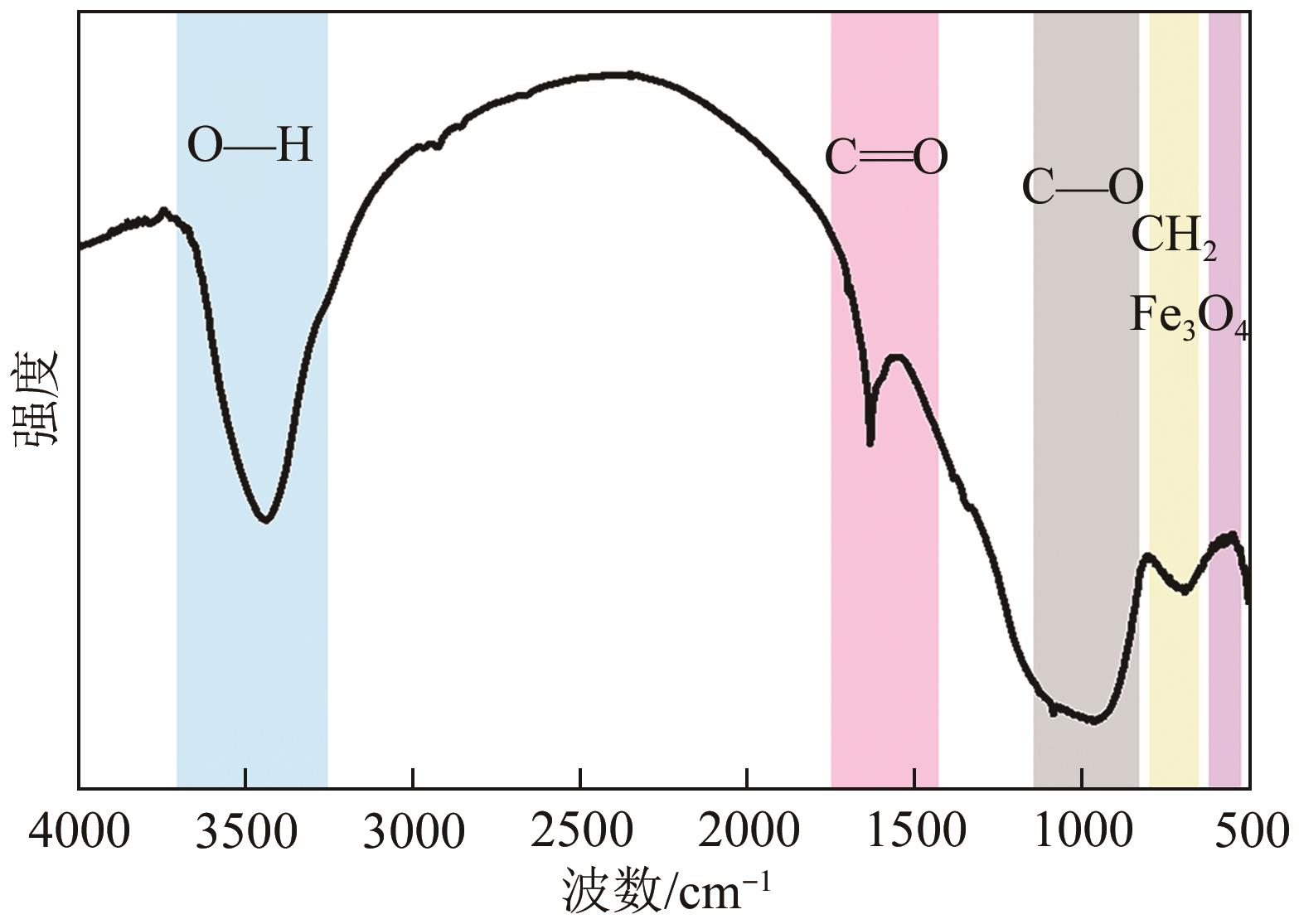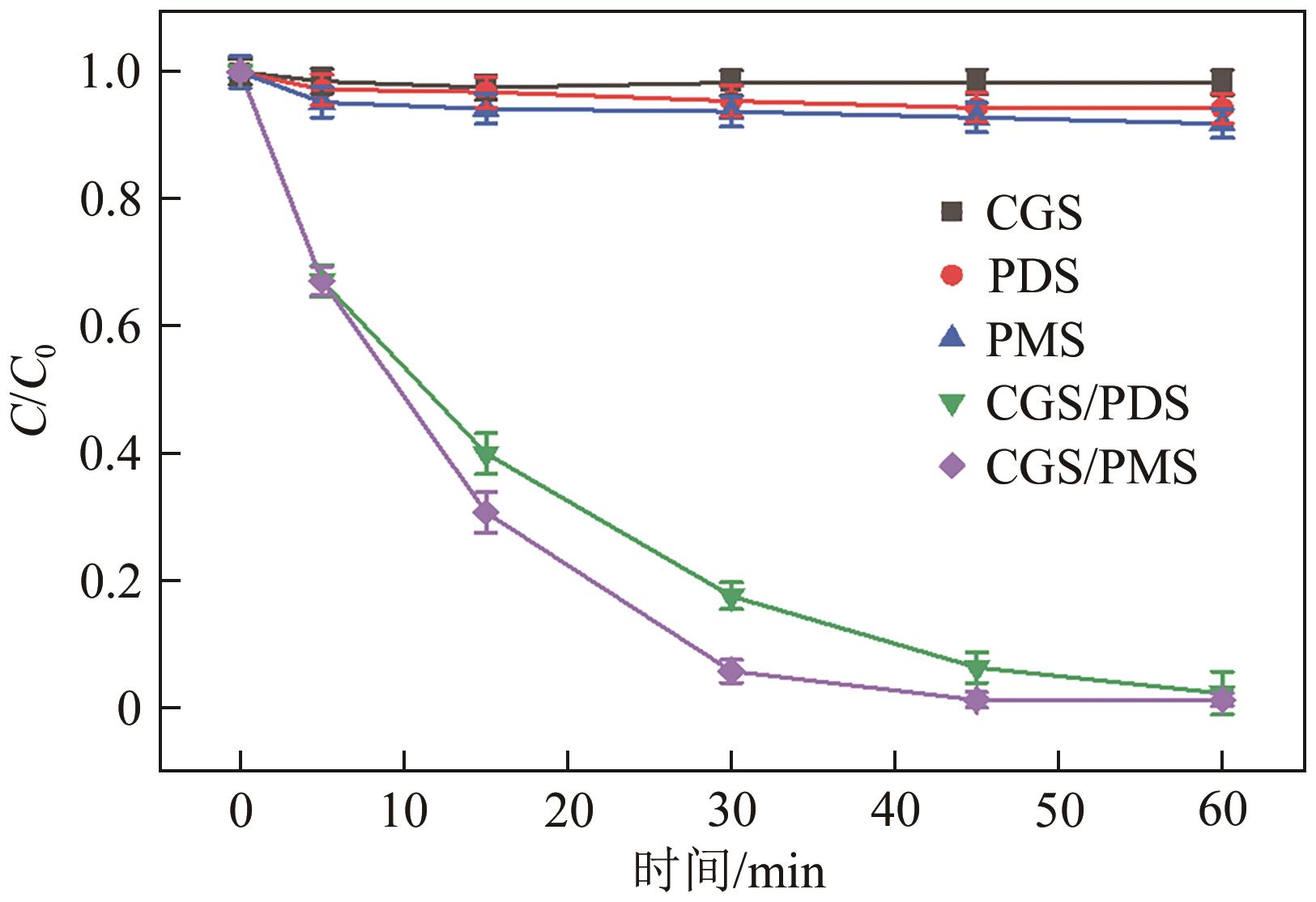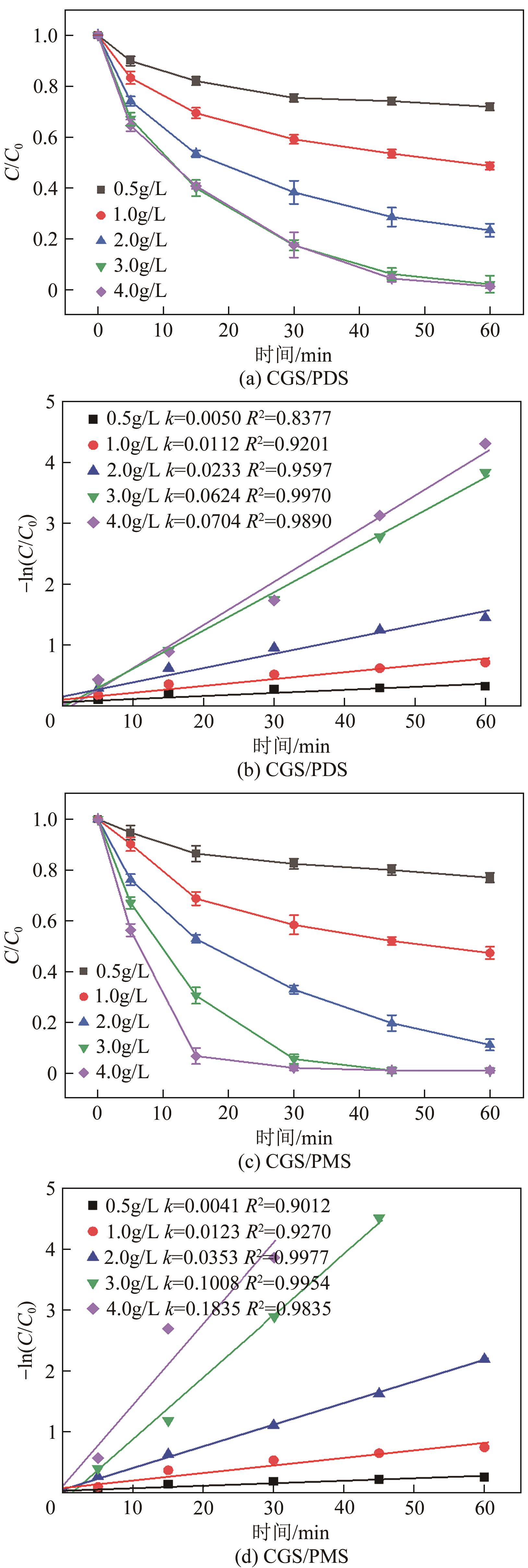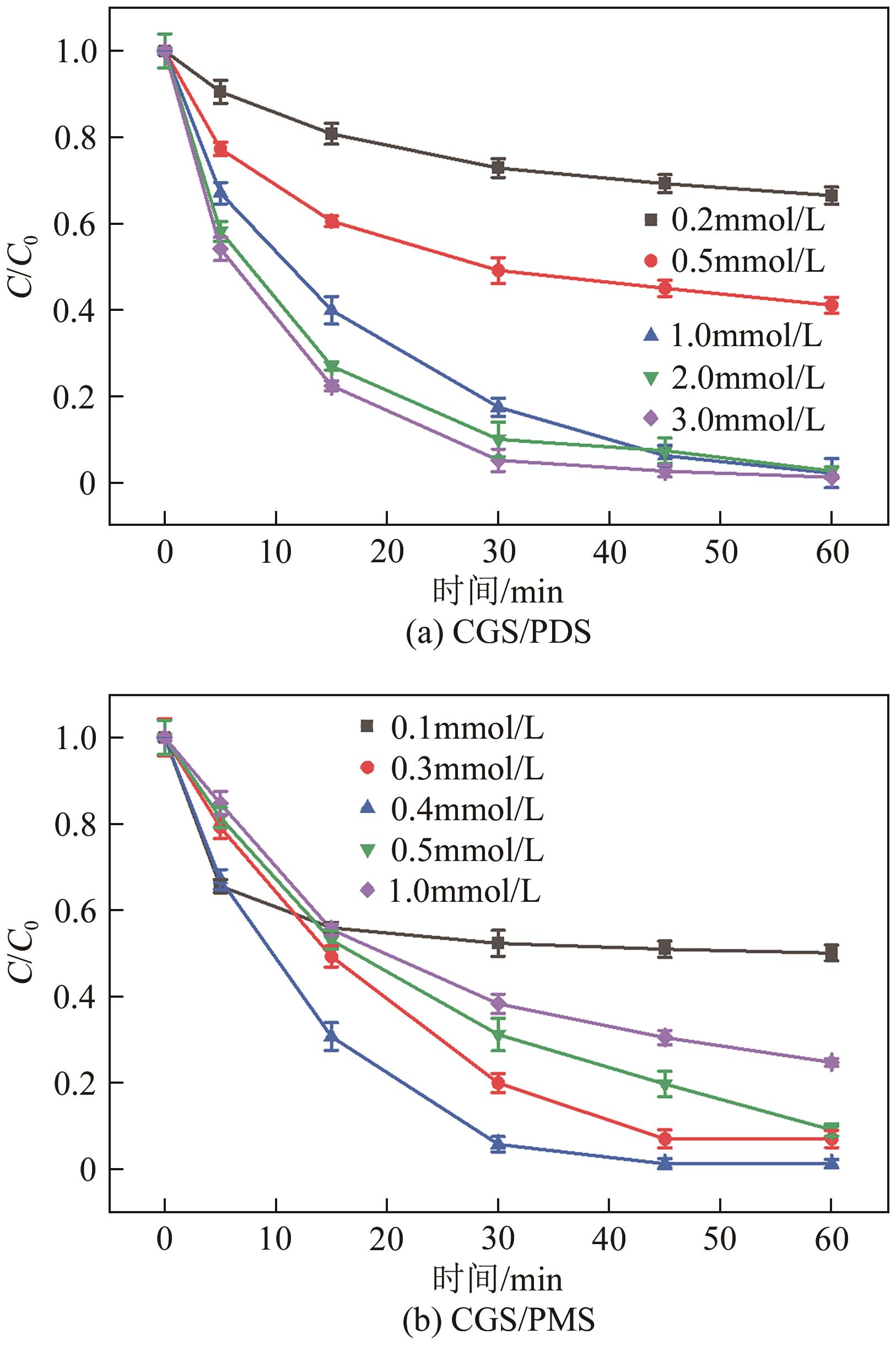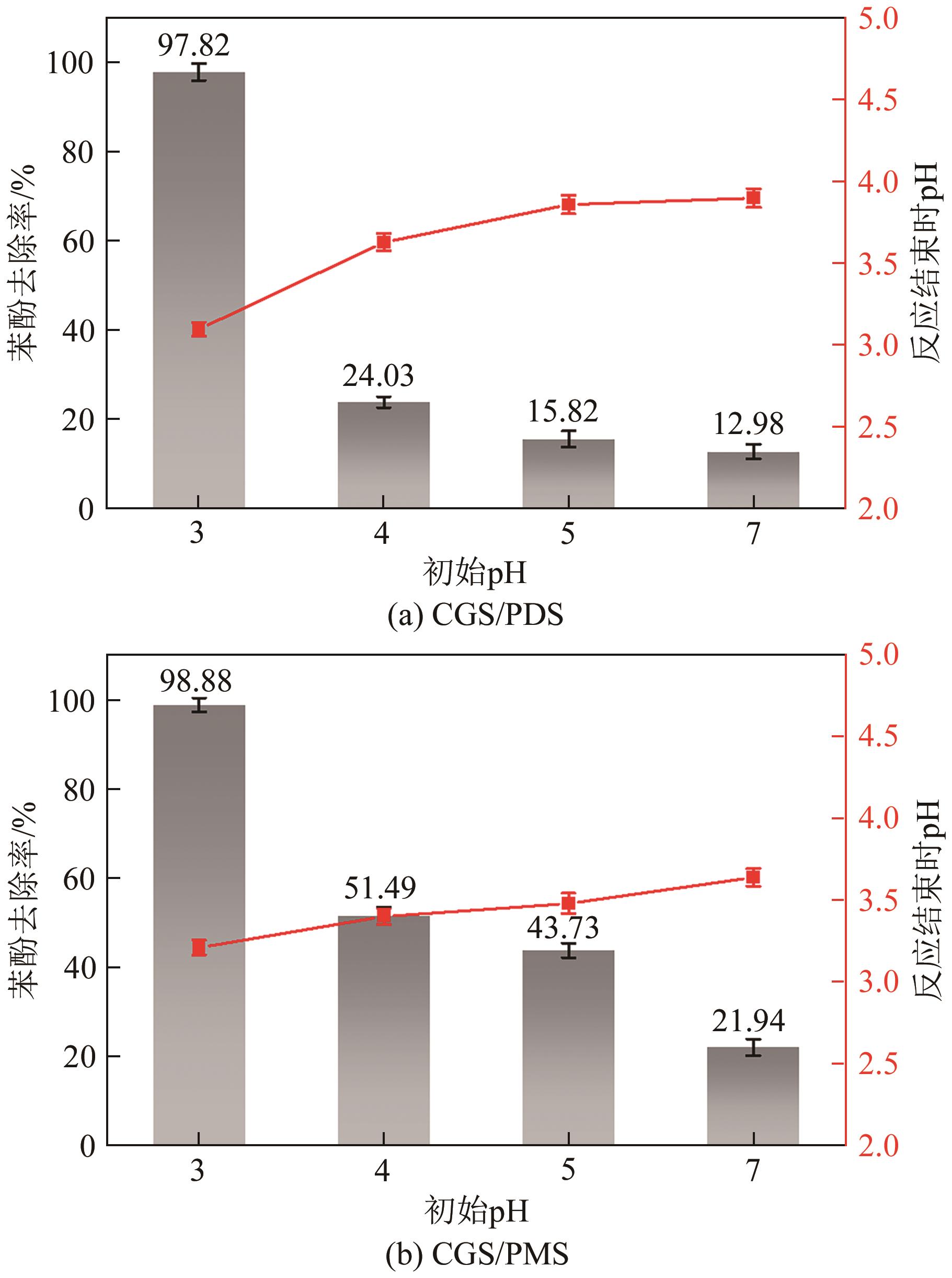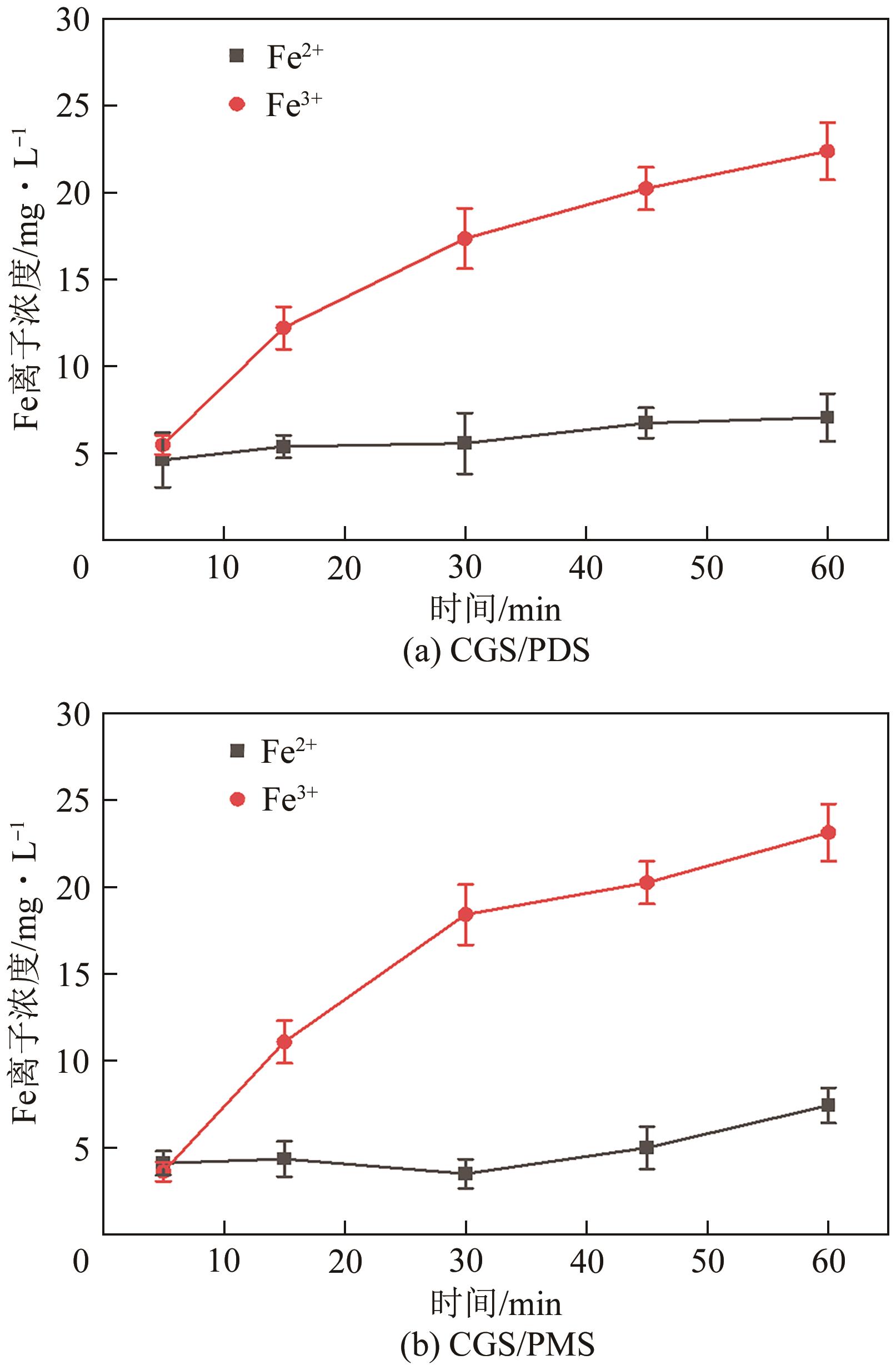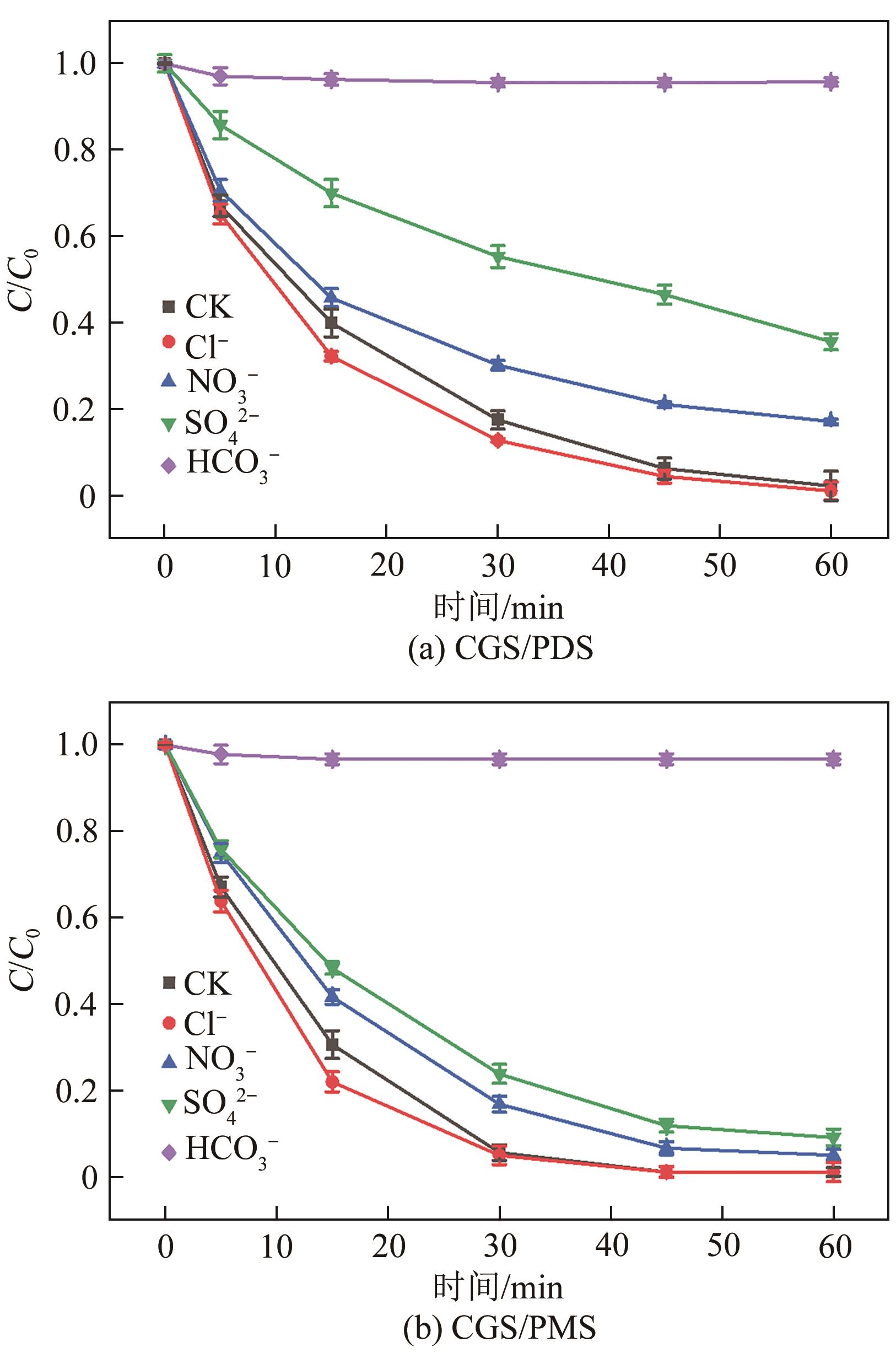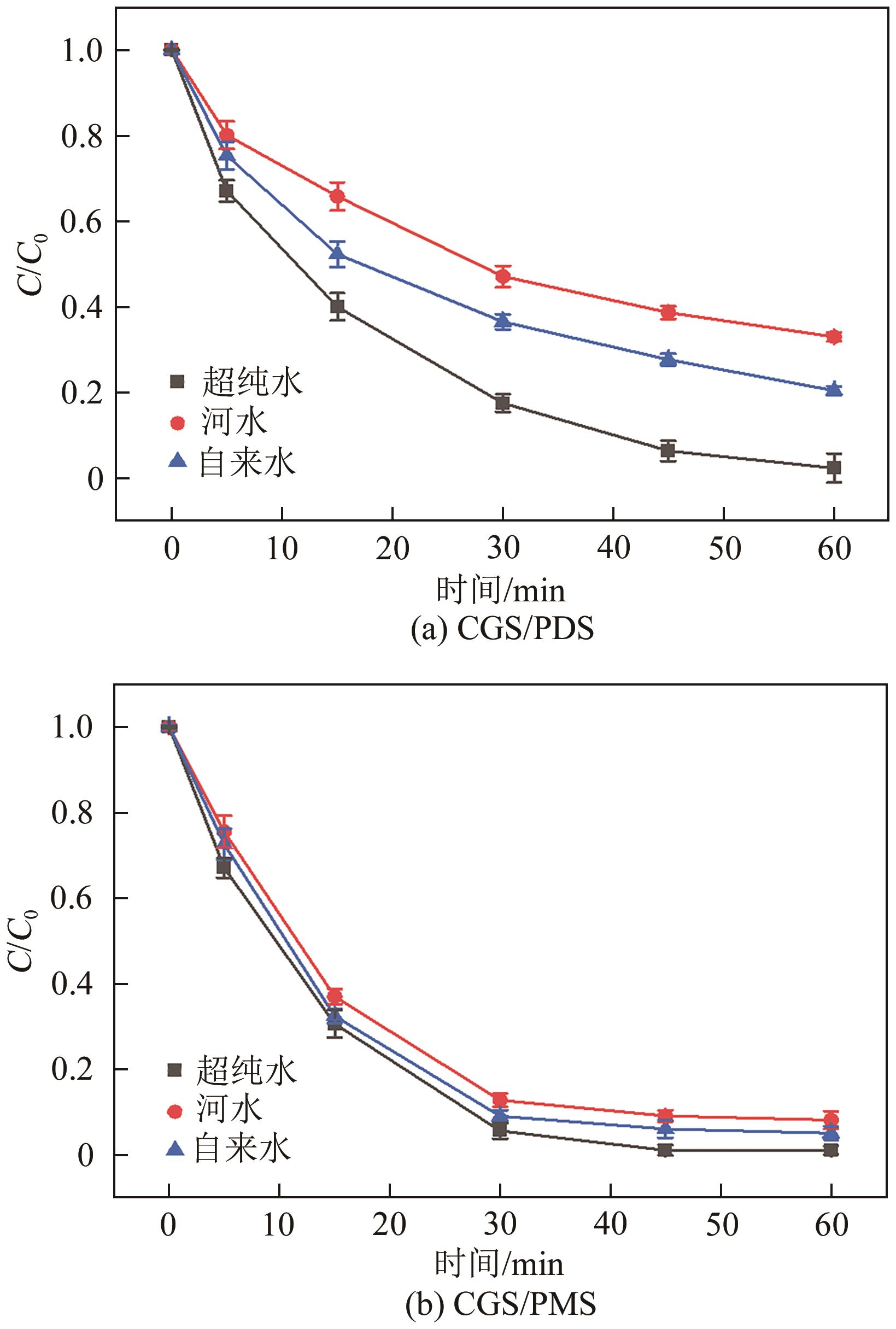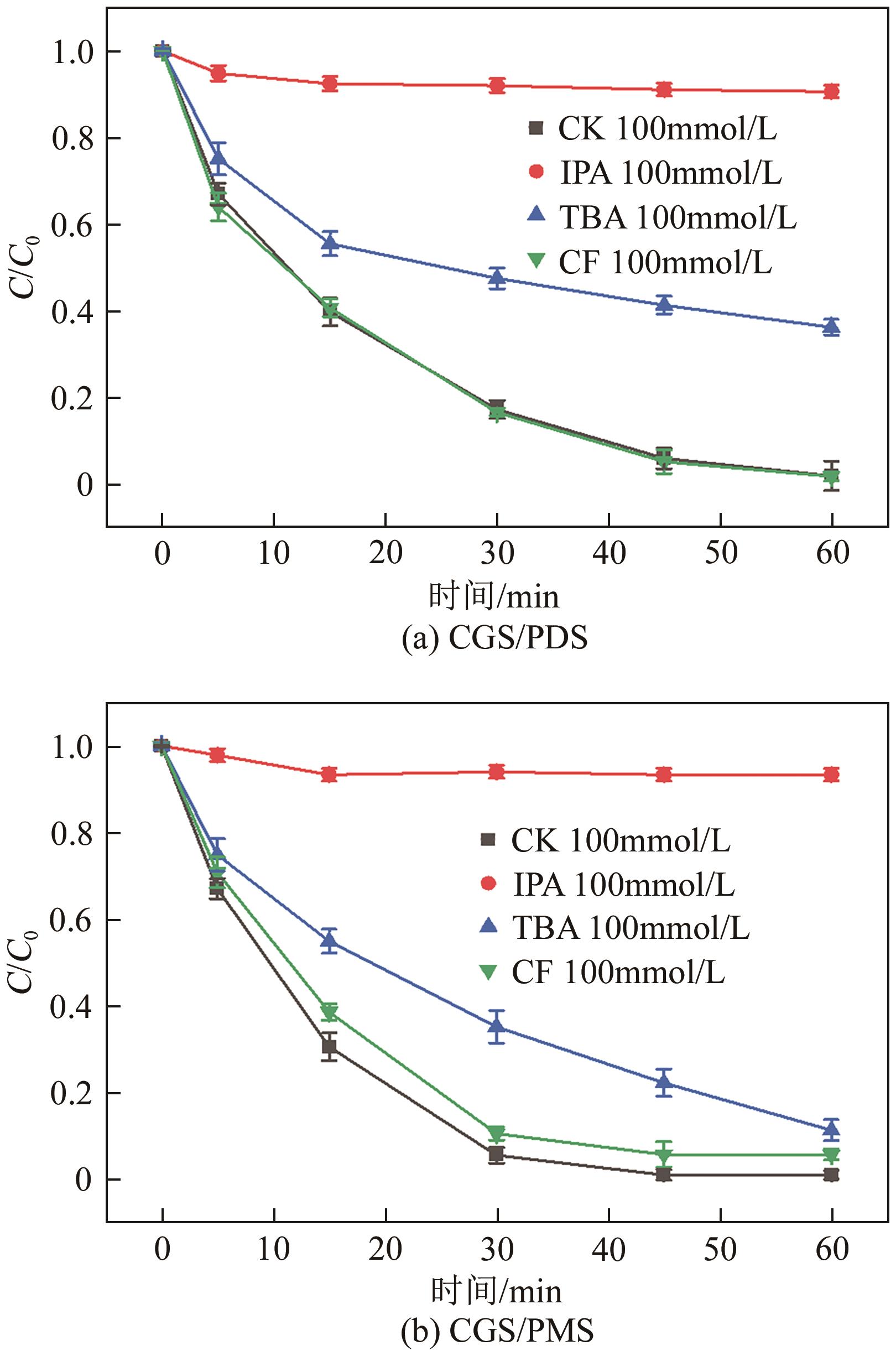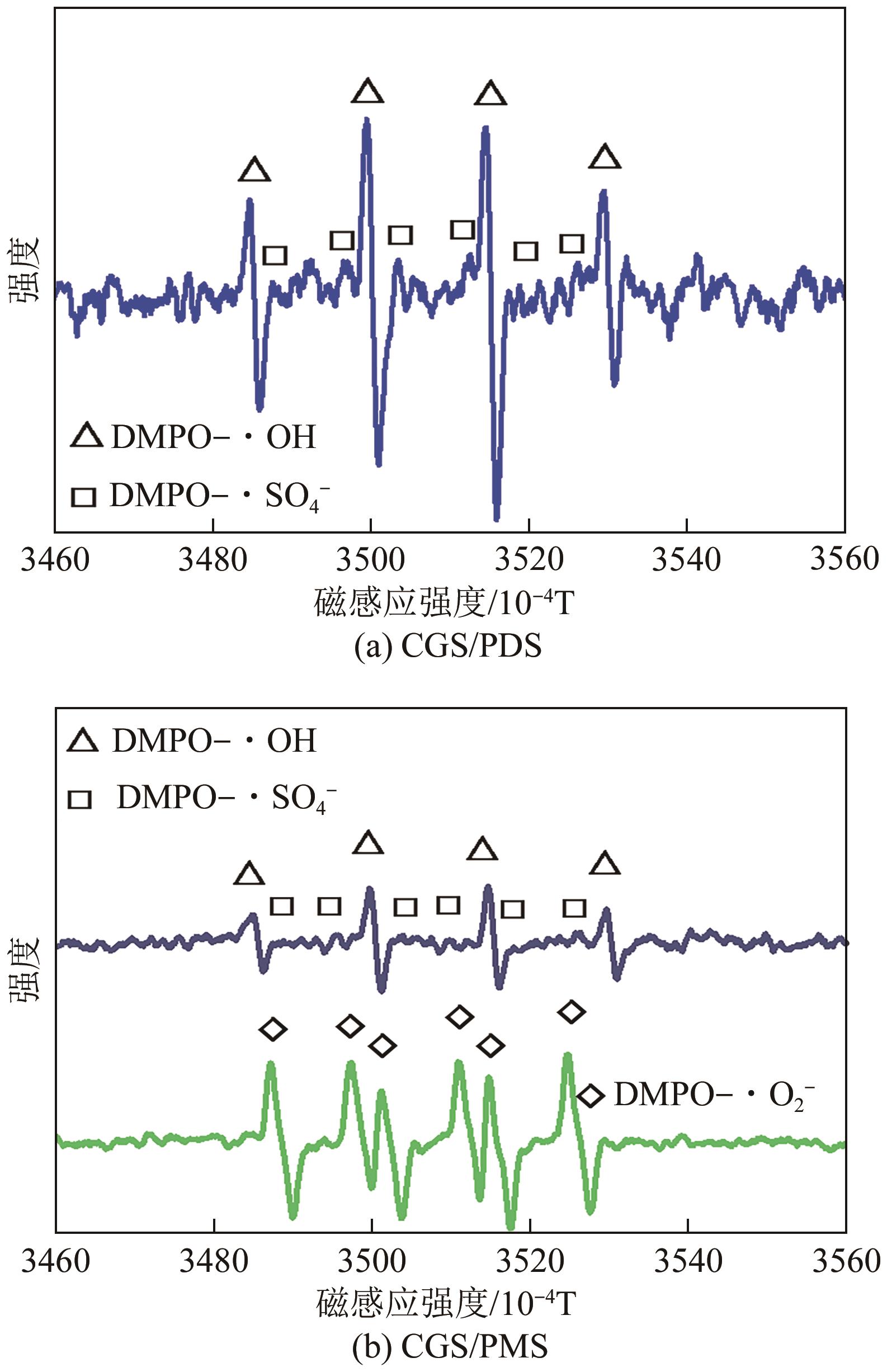Chemical Industry and Engineering Progress ›› 2024, Vol. 43 ›› Issue (6): 3503-3512.DOI: 10.16085/j.issn.1000-6613.2023-0897
• Resources and environmental engineering • Previous Articles
Comparison of phenol degradation by persulfate and peroxymonosulfate activated with coal gasification slag
LI Yanan( ), GUO Kai, WANG Jiaqi, WU Yaning
), GUO Kai, WANG Jiaqi, WU Yaning
- Department of Environmental Science and Engineering, Taiyuan University of Technology, Jinzhong 030600, Shanxi, China
-
Received:2023-05-31Revised:2023-08-01Online:2024-07-02Published:2024-06-15 -
Contact:LI Yanan
煤气化渣活化过二硫酸盐和过一硫酸盐降解苯酚的比较
- 太原理工大学环境科学与工程学院,山西 晋中 030600
-
通讯作者:李亚男 -
作者简介:李亚男(1983—),女,博士,副教授,硕士生导师,研究方向为污废水处理技术。E-mail:liyanan@tyut.edu.cn。 -
基金资助:自然资源部生态地球化学重点实验室开放基金(ZSDHJJ201804);山西省应用基础研究计划(20210302123121);山西省回国留学人员科研教研资助项目(2023-054)
CLC Number:
Cite this article
LI Yanan, GUO Kai, WANG Jiaqi, WU Yaning. Comparison of phenol degradation by persulfate and peroxymonosulfate activated with coal gasification slag[J]. Chemical Industry and Engineering Progress, 2024, 43(6): 3503-3512.
李亚男, 郭凯, 王嘉琪, 武亚宁. 煤气化渣活化过二硫酸盐和过一硫酸盐降解苯酚的比较[J]. 化工进展, 2024, 43(6): 3503-3512.
share this article
Add to citation manager EndNote|Ris|BibTeX
URL: https://hgjz.cip.com.cn/EN/10.16085/j.issn.1000-6613.2023-0897
| 1 | CHEN Cheng, LIU Li, LI Wei, et al. Reutilization of waste self-heating pad by loading cobalt: A magnetic and green peroxymonosulfate activator for naphthalene degradation[j]. Journal of Hazardous Materials, 2022, 439: 129572. |
| 2 | DAI Chaomeng, ZHANG Jun bo, GAO Mintian, et al. Effects of functional group loss on biochar activated persulfate in situ remediation of phenol pollution in groundwater and its countermeasures[J]. Journal of Environmental Management, 2023, 341: 118076. |
| 3 | USHANI Uthirakrishnan, LU Xueqin, WANG Jianhui, et al. Sulfate radicals-based advanced oxidation technology in various environmental remediation: A state-of-the-art review[J]. Chemical Engineering Journal, 2020, 402: 126232. |
| 4 | HU Limin, ZHANG Guangshan, WANG Qiao, et al. Effect of microwave heating on persulfate activation for rapid degradation and mineralization of p-nitrophenol[J]. ACS Sustainable Chemistry & Engineering, 2019, 7(13): 11662-11671. |
| 5 | SHANG Xiao, LIU Xitao, REN Wenbo, et al. Comparison of peroxodisulfate and peroxymonosulfate activated by microwave for degradation of chlorpyrifos in soil: Effects of microwaves, reaction mechanisms and degradation products[J]. Separation and Purification Technology, 2023, 306: 122682. |
| 6 | XU Ximeng, LIU Dan, CHEN Weiming, et al. Waste control by waste: Efficient removal of bisphenol A with steel slag, a novel activator of peroxydisulfate[J].Environmental Chemistry Letters, 2018, 16(4): 1435-1440. |
| 7 | QIAN Lina, YAN Su, YONG Xiaoyu, et al. Effective degradation of chloramphenicol in wastewater by activated peroxymonosulfate with Fe-rich porous biochar derived from petrochemical sludge[J]. Chemosphere, 2023, 310: 136839. |
| 8 | Bo LYU, DENG Xiaowei, JIAO Feishuo, et al. Enrichment and utilization of residual carbon from coal gasification slag: A review[J]. Process Safety and Environmental Protection, 2023, 171: 859-873. |
| 9 | MONTAGNARO Fabio, BRACHI Paola, SALATINO Piero. Char-wall interaction and properties of slag waste in entrained-flow gasification of coal[J]. Energy & Fuels, 2011, 25(8): 3671-3677. |
| 10 | FU Bo, CHENG Zhenyun, WANG Dezhi, et al. Investigation on the utilization of coal gasification slag in Portland cement: Reaction kinetics and microstructure[J]. Construction and Building Materials, 2022, 323: 126587. |
| 11 | ZHU Dandan, XUE Bing, JIANG Yinshan, et al. Using chemical experiments and plant uptake to prove the feasibility and stability of coal gasification fine slag as silicon fertilizer[J].Environmental Science and Pollution Research, 2019, 26(6): 5925-5933. |
| 12 | QIAO Qixia, ZHOU Huiming, GUO Feiqiang, et al. Facile and scalable synthesis of mesoporous composite materials from coal gasification fine slag for enhanced adsorption of malachite green[J]. Journal of Cleaner Production, 2022, 379: 134739. |
| 13 | CHEN Xi, QIAN Shufang, MA Yongfei, et al. Efficient degradation of sulfamethoxazole in various waters with peroxymonosulfate activated by magnetic-modified sludge biochar: Surface-bound radical mechanism[J]. Environmental Pollution, 2023, 319: 121010. |
| 14 | DONG Hongyu, XU Qinghua, LIAN Lushi, et al. Degradation of organic contaminants in the Fe(Ⅱ)/peroxymonosulfate process under acidic conditions: The overlooked rapid oxidation stage[J]. Environmental Science & Technology, 2021, 55(22): 15390-15399. |
| 15 | SILVEIRA Jefferson E, CLARO Elis Marina Turini, PAZ Wendel S, et al. Optimization of Disperse Blue 3 mineralization by UV-LED/FeTiO3 activated persulfate using response surface methodology[J]. Journal of the Taiwan Institute of Chemical Engineers, 2018, 85: 66-73. |
| 16 | LIU Tong, CUI Kangping, LI Chenxuan, et al. Efficient peroxymonosulfate activation by biochar-based nanohybrids for the degradation of pharmaceutical and personal care products in aquatic environments[J]. Chemosphere, 2023, 311: 137084. |
| 17 | CAI Anhong, LING Xiao, WANG Lei, et al.Insight into UV-LED/PS/Fe(Ⅲ) and UV-LED/PMS/Fe(Ⅲ) for p-arsanilic acid degradation and simultaneous arsenate immobilization[J]. Water Research, 2022, 223: 118989. |
| 18 | Tugba OLMEZ-HANCI, Idil ARSLAN-ALATON. Comparison of sulfate and hydroxyl radical based advanced oxidation of phenol[J]. Chemical Engineering Journal, 2013, 224: 10-16. |
| 19 | YU Sixia, GU Xiaogang, LU Shuguang, et al. Degradation of phenanthrene in aqueous solution by a persulfate/percarbonate system activated with CA chelated-Fe(Ⅱ)[J]. Chemical Engineering Journal, 2018, 333: 122-131. |
| 20 | CHEN Xuwen, YANG Bing, OLESZCZUK Patryk, et al. Vanadium oxide activates persulfate for degradation of polycyclic aromatic hydrocarbons in aqueous system[J]. Chemical Engineering Journal, 2019, 364: 79-88. |
| 21 | GU Mengbin, SUI Qian, FAROOQ Usman, et al. Degradation of phenanthrene in sulfate radical based oxidative environment by nZVI-PDA functionalized rGO catalyst[J]. Chemical Engineering Journal, 2018, 354: 541-552. |
| 22 | LIU Zihao, AN Yujiao, LI Xiaowan. Insight into mechanism of peroxydisulfate activation by natural pyrite: Participation of Fe(Ⅳ) and regulation of Fe(Ⅲ)/Fe(Ⅱ) cycle by sulfur species[J]. Chemosphere, 2023, 314: 137657. |
| 23 | WANG Qiongfang, SHAO Yisheng, GAO Naiyun, et al. Activation of peroxymonosulfate by Al2O3-based CoFe2O4 for the degradation of sulfachloropyridazine sodium: Kinetics and mechanism[J]. Separation and Purification Technology, 2017, 189: 176-185. |
| 24 | LIANG Chuan, SUN Hongwei, LING Cancan, et al. Pyrolysis temperature-switchable Fe-N sites in pharmaceutical sludge biochar toward peroxymonosulfate activation for efficient pollutants degradation[J]. Water Research, 2023, 228: 119328. |
| 25 | LU Xiaohui, CHEN Yiwei, CHI Huiyuan, et al. Cu(Ⅱ) assisted peroxymonosulfate for antibiotic resistant bacteria inactivation: A potential disinfection technology in swimming pool[J]. Science of the Total Environment, 2023, 876: 162755. |
| 26 | XU Kaijie, CUI Kangping, CUI Minshu, et al. Carbonyl heterocycle modified mesoporous carbon nitride in photocatalytic peroxydisulfate activation for enhanced ciprofloxacin removal: Performance and mechanism[J]. Journal of Hazardous Materials, 2023, 444: 130412. |
| 27 | YU Yunjiang, ZHONG Zijuan, GUO Haobo, et al. Biochar-goethite composites inhibited/enhanced degradation of triphenyl phosphate by activating persulfate: Insights on the mechanism[J]. Science of the Total Environment, 2023, 858: 159940. |
| 28 | CHEN Xiaojuan, ZHOU Yu, LI Jiesen, et al. Activated peroxydisulfate by sorghum straw-based biochar for enhanced tartrazine degradation: Roles of adsorption and radical/nonradical processes[J]. Environmental Pollution, 2023, 316: 120665. |
| 29 | LIU Xiyang, HUANG Fei, YU Yang, et al. Ofloxacin degradation over Cu-Ce tyre carbon catalysts by the microwave assisted persulfate process[J]. Applied Catalysis B: Environmental, 2019, 253: 149-159. |
| [1] | GAO Zenglin, ZHANG Qian, GAO Chenming, YANG Kai, GAO Zhihua, HUANG Wei. Extraction and separation of carbon from coal water slurry gasification coarse slag by waterflow classifier [J]. Chemical Industry and Engineering Progress, 2024, 43(3): 1576-1583. |
| [2] | BAI Yuli, BAI Fudong, ZHANG Lei, SUN Qimei, LI Xiuzheng. Preparation and process optimization of lignin-based phenolic resin [J]. Chemical Industry and Engineering Progress, 2024, 43(2): 1033-1038. |
| [3] | WANG Weitao, BAO Tingyu, JIANG Xulu, HE Zhenhong, WANG Kuan, YANG Yang, LIU Zhaotie. Oxidation of benzene to phenol over aldehyde-ketone resin based metal-free catalyst [J]. Chemical Industry and Engineering Progress, 2023, 42(9): 4706-4715. |
| [4] | ZHANG Lihong, JIN Yaoru, CHENG Fangqin. Resource utilization of coal gasification slag [J]. Chemical Industry and Engineering Progress, 2023, 42(8): 4447-4457. |
| [5] | WU Fengzhen, LIU Zhiwei, XIE Wenjie, YOU Yating, LAI Rouqiong, CHEN Yandan, LIN Guanfeng, LU Beili. Preparation of biomass derived Fe/N co-doped porous carbon and its application for catalytic degradation of Rhodamine B via peroxymonosulfate activation [J]. Chemical Industry and Engineering Progress, 2023, 42(6): 3292-3301. |
| [6] | YANG Hongmei, GAO Tao, YU Tao, QU Chengtun, GAO Jiapeng. Treatment of refractory organics sulfonated phenolic resin with ferrate [J]. Chemical Industry and Engineering Progress, 2023, 42(6): 3302-3308. |
| [7] | SUN Qianqian, LIU Zhen, LI Rui, ZHANG Xi, YANG Mingde, WU Yulong. Low temperature hydrothermal coupling of ferrous ion activated persulfate to improve the dewatering performance of waste activated sludge [J]. Chemical Industry and Engineering Progress, 2023, 42(2): 595-602. |
| [8] | YANG Youwei, ZENG Yiting, GUO Changsheng, LUO Yuxia, GAO Yan, WANG Chunying. Preparation of Prussian blue and its activation of PMS for degrading bisphenol S [J]. Chemical Industry and Engineering Progress, 2023, 42(12): 6676-6686. |
| [9] | TIAN Yue, DONG Xiaohan, SU Yi. Preparation of the SiO2-CTAB composite material and its adsorption properties for PNP [J]. Chemical Industry and Engineering Progress, 2023, 42(11): 6064-6075. |
| [10] | WU Zhongjie, XIE Lianke, WANG Jinghui, HUANG Renliang. Preparation of hierarchical copper hydroxyl nitrate nanozyme for degradation of phenolic pollutants [J]. Chemical Industry and Engineering Progress, 2023, 42(1): 497-505. |
| [11] | FU Jia, CHEN Lunjian, XU Bing, HUA Shaofeng, LI Congqiang, YANG Mingkun, XING Baolin, YI Guiyun. Microbial degradation of phenol in simulated coal gasification wastewater [J]. Chemical Industry and Engineering Progress, 2023, 42(1): 526-537. |
| [12] | ZHU Hao, LIU Hanfei, JI Yufan, LI Shuangtao, HUANG Yiping, GAO Yuan, WEI Zhenhao, ZHU Kai, HAN Weiqing, WEI Kajia. Research advance and mechanism analysis of catalytic ozonation of phenolic compounds [J]. Chemical Industry and Engineering Progress, 2022, 41(S1): 545-555. |
| [13] | LIU Dachen, DU Minghui, WANG Heng. Bromination modification of phenolic hydroxyl sites of crosslinked teroctyl phenolic resin [J]. Chemical Industry and Engineering Progress, 2022, 41(S1): 382-388. |
| [14] | YANG Liu, WANG Mingwei, ZHANG Yaobin. Magnetite-loaded biochar for enhanced anaerobic microbial treatment of 2,4-dichlorophenol wastewater [J]. Chemical Industry and Engineering Progress, 2022, 41(9): 5065-5073. |
| [15] | PAN Jie, WANG Mingxin, GAO Shengwang, XIA Xunfeng, HAN Xue. Nitrogen-sulfur doped biochar/permonosulfate for degradation of sulfisoxazole in water [J]. Chemical Industry and Engineering Progress, 2022, 41(8): 4204-4212. |
| Viewed | ||||||
|
Full text |
|
|||||
|
Abstract |
|
|||||
